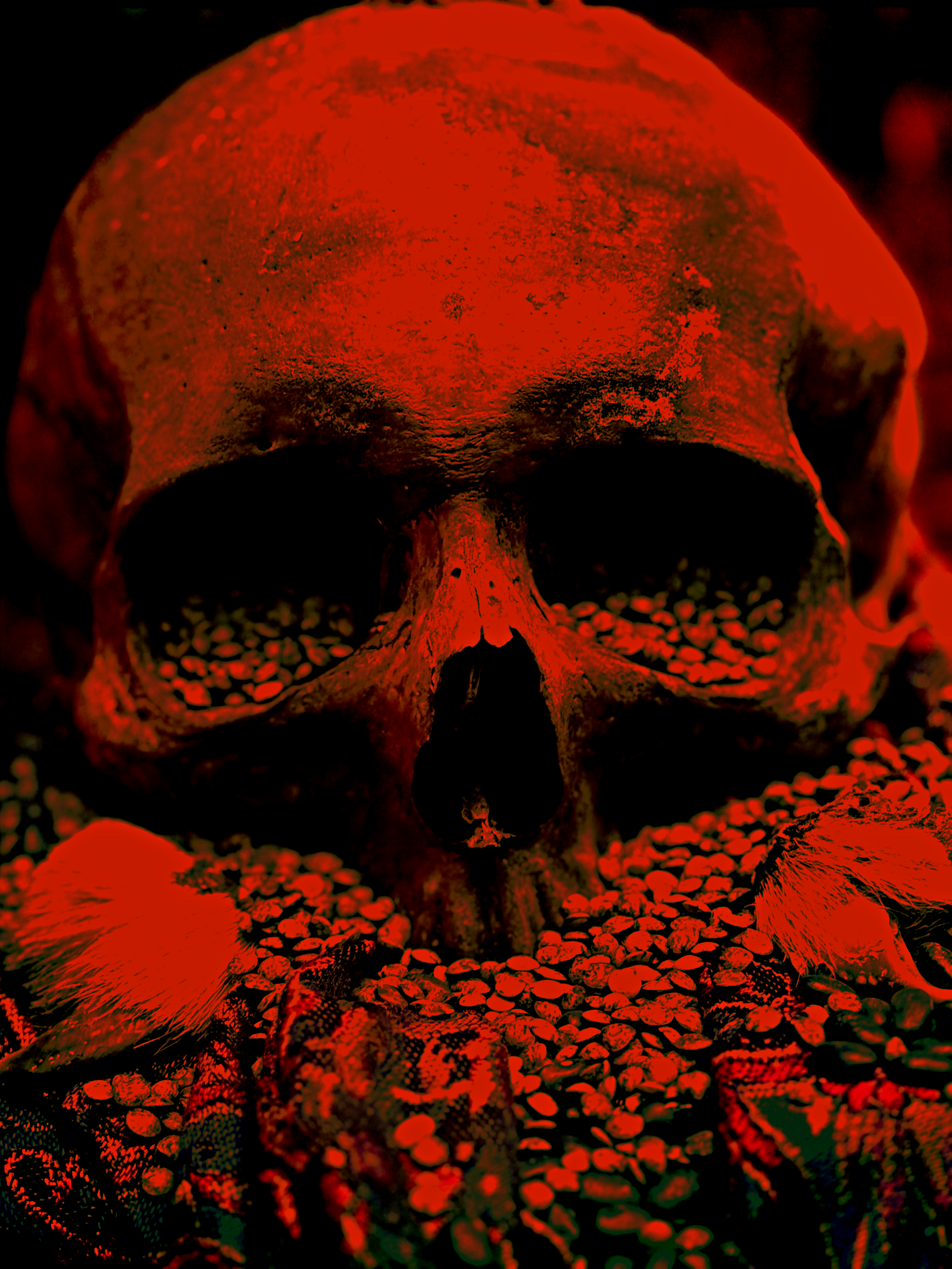
Goêtic Atavisms
In preparation for new edition
Goêtic Atavisms
Written by Frater Acher & Craig Slee
Introduction by Frater U∴D∴
Artwork by José Gabrial Alegria Sabogal
Print & digital release: 2023
Numbered fine edition of 72 copies, privately bound, pictured here
Goêtic Atavisms is designed to be an uncompromising and challenging book. Written in mutual exchange between practitioners Frater Acher and Craig Slee, two radical views and explorations of applied goêtia emerge. The book can be read from both sides; behind one cover containing the chapters by Acher, behind the other those by Craig Slee, and where they meet in the middle a preface by none other than Frater U∴D∴.
In their own unique voices, the authors draw the reader in and call on them to bring goêteia to life in their own flesh. Over twelve chapters, packed with historic detail and practical experimentations, the reader is guided to take a fresh look at such diverse bodies of goêtic work as Zosimos of Panopolis, Germanic and Old Iranian folklore, Goethe's Faust and the Earth Spirit, Austin Osman Spare's oeuvre, as well as modern forms of corporeality such as pornography, tattoo culture, and bodily disability. Goêtic Atavisms was written not only to be a sensual experience, but to facilitate magical touch.
Continue reading below for a detailed overview of the contents of all chapters by both authors.
Frater Acher speaks…
-
By exploring the Veil of Mirmidones we approach an understanding of chthonic sorcery that aims not at precision and universality, but at prescience, ambiguity, and iridescence. We sharpen this contrast by comparing this form of practical goêteia with modern notions of pornography, eroticism, and intimacy. We step forward from this chapter with a renewed understanding of a goêtic way of knowing.
-
We take the liberty of restating the concept of atavisms in their magical significance. From there, we move forward to take a fresh look at Austin Osman Spare’s core magical concepts, especially the idea of Atavistic Resurgence. We condense our insights into a simple model. We emerge from these explorations with a renewed awareness of the importance of animistic embeddedness for Spare’s and our own goêtic work.
-
y Erich-Will Peuckert: This chapter is the first English translation of a previously unknown essay from the estate of the famous 20th-century scholar of ritual- and folk-magic Will Erich Peuckert. In it, he takes on the earth-spirit scene of Goethe’s Faust, and in his incomparable way traces this archaic spiritual being through folklore, and high magic to the natural philosophy of Paracelsus and Giordano Bruno.
-
We continue our journey into chthonic sorcery with the conscious experience of our own bodies, then descend into the primal depths, encounter the chthonic dragon, and land in a field of mandrake lore where we are still surrounded by echoes of Archeus. This chapter teaches us how to experience the most ancient atavisms of this earth everywhere, both in microcosmic and macrocosmic ways.
-
With a few preparations, we embark upon three alchemical visions to embalm ourselves in the breath of the Chthonic Dragon or the Paracelsian Archeus. These workings are simple and straightforward in execution, yet sophisticated and multi-layered in their ancient design. Repeated practice is recommended. We end with an important clue by Zosimos of Panopolis.
-
We explore of the notion of the goêtic body as an embodiment of figure and dis/figurement, before we encounter ourselves as fords in the river of life and death. We close with historical highlights that illuminate the crossroads where the spirits of tattooing, goêteia and radical otherness meet.
Craig Slee Speaks…
-
We begin this journey with a probe: What if there was a way of seeing the light that is a human, in a way that it could not be disempowered, dismembered or dispirited? What if giving up our modern compulsive obsession with healing and intactness, could form the beginning of an entirely different understanding of what it means to be human. A goêtic way of relating to the world as well as our selves embedded within it.
-
From digesting to being digested, this essay takes us into the human experience of the ‘dis’, as in dis/member, dis/able, dis/tance, dis/closure. By giving up the desire for impenetrable identities and bodies, by teaching us to let go and becoming okay with being swallowed by the hedges, by that which grows wild on the threshold, we are shown a radical new way of approaching goêtic practice. Or rather: being practiced upon.
-
In response to the chapter ‘Goêtic Atavisms’ this essay unfolds as a libation poured out in honour of Austin Osman Spare. This text is best understood as an evocation, not of a dead spirit, but of our own spirit in liquid, unbiased form, so that we can reacquaint ourselves with the loosened state of seeping and searching our own way into unknown cracks and crevices – like a libation poured out and becoming one with the ground.
-
Building on the folklore of Peuckert’s elucidations on the Earth Spirit, this chapter takes us deep into the goêtic underworld. It introduces us to the Archaeus of the Birds, to forgotten miner lore and troll myths, and challenges us to go into a state of radical transformation through radical stillness. Just then, we might realise there is no additional magic required from our end, once we can hear our long-forgotten kin knocking on our thresholds.
-
We close with an exploration of the existential magical dilemma: If everything is entangled, the question becomes: where do we wield the knife? We break down the artificial divide between theory and practice, beings ensouled and embodied, magic turned word and flesh.
“He who followeth the angels followeth his father. He who learneth from the spirits learneth from his father. He who knoweth the beasts knoweth himself. He who understandeth the elements knoweth how the macrocosm is created.”
— Paracelsus

